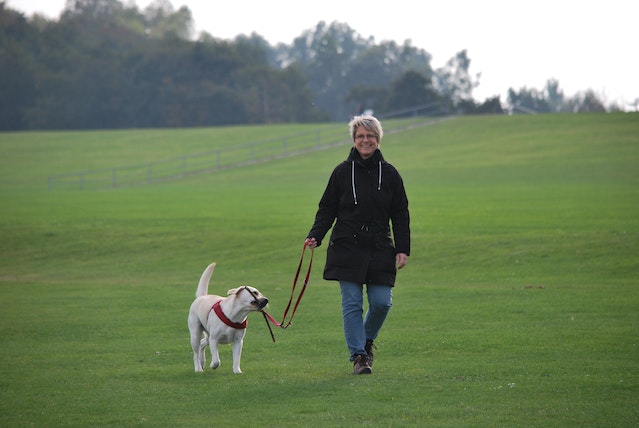Assistance dogs play a vital role in supporting individuals with disabilities, offering them greater independence and a better quality of life. While many assistance dogs are trained by professional organizations, a growing number of individuals in the UK are opting to train their own assistance dogs. This comprehensive guide explores the concept of owner trained assistance dogs, covering the benefits, challenges, training processes, and legal considerations involved.
Understanding Owner Trained Assistance Dogs
Owner trained assistance dogs are dogs that are trained by their owners, rather than by professional organizations, to perform specific tasks that mitigate their handler’s disability. These tasks can vary widely, from retrieving dropped items to alerting to medical conditions, depending on the handler’s needs.
In the UK, assistance dogs, including those trained by their owners, are protected under the Equality Act 2010. This legislation ensures that assistance dogs have access to public places, transportation, and housing, much like their professionally trained counterparts.
Benefits of Owner Trained Assistance Dogs
One of the main advantages of training your own assistance dog is the ability to tailor the training to your specific needs. When you train your dog yourself, you can focus on the particular tasks that will be most beneficial to you. This personalized approach ensures that the dog’s skills are directly relevant to your daily life and challenges.
Training your own dog also allows for a flexible schedule. Professional training programs can be rigorous and inflexible, whereas owner training enables you to train at a pace that suits your lifestyle and time constraints. This can be particularly beneficial for those whose disabilities make adhering to a strict schedule difficult.
Another significant benefit is the strengthened bond that forms between handler and dog. Training your own assistance dog fosters a deep understanding and trust, which is crucial for the dog to perform its tasks effectively. This close relationship can enhance the dog’s ability to intuitively respond to your needs, often before a command is given.
Financially, owner training can be more cost-effective. Professional assistance dog training programs can be expensive, often costing thousands of pounds and involving long waiting lists. By training your own dog, you can potentially save money and avoid these long delays.
Challenges of Owner Training
Training your own assistance dog is not without its challenges. It requires a significant time commitment and dedication. Consistent training and reinforcement are crucial for the dog’s success as an assistance animal. This can be particularly demanding for individuals who are already managing a disability.
Another challenge is the lack of professional expertise. While there are many resources available, owners may not have the same level of experience and knowledge as professional trainers. This can lead to difficulties in training and may require seeking guidance from experienced trainers or support groups.
Owner trained dogs may also face legal and social hurdles. Public acceptance can be a significant issue, as owner trained dogs might be viewed with skepticism. Additionally, unlike dogs trained by recognized organizations, owner trained dogs might not have official certification, leading to difficulties in accessing public spaces. It is essential to be well-versed in your rights and prepared to advocate for your assistance dog.
Training Process
The training process for owner trained assistance dogs begins with selecting the right dog. Not all dogs are suitable for assistance work. It is crucial to choose a dog with the right temperament, health, and disposition. Temperament testing can help evaluate a dog’s behavior, adaptability, and response to various stimuli.
Once you have selected a suitable dog, the next step is basic obedience training. This includes teaching fundamental commands such as sit, stay, come, and heel. Public access training is also essential, ensuring that the dog behaves appropriately in public settings, remains focused, and does not get distracted by people or other animals.
The core of training an assistance dog lies in task-specific training. This involves identifying the specific tasks that the dog will perform to assist with your disability. Training techniques such as positive reinforcement and consistent methods are crucial in teaching the dog these tasks. Regular practice and reinforcement are necessary to ensure the dog’s reliability in performing its duties.
Training should be an ongoing process. As your needs evolve, you may need to adjust the training to accommodate changes. Seeking professional guidance, even as an owner trainer, can be beneficial. Organizations such as Assistance Dogs UK and Canine Partners offer resources and support for owner trainers.
Handlers often report significant improvements in their physical and mental well-being, increased independence, and a stronger sense of security due to their owner trained assistance dogs.
Legal Considerations
In the UK, while there is no mandatory certification for assistance dogs, having documentation can help verify the dog’s training and role. Equipping your dog with an identification vest or harness signals its role as an assistance animal and can facilitate public access.
The Equality Act 2010 grants assistance dogs the right to accompany their handlers in public places, including shops, restaurants, and public transport. It also ensures housing rights, requiring landlords to make reasonable adjustments to accommodate assistance dogs, even in properties with no-pet policies.
However, handlers should be prepared to face discrimination and be ready to advocate for their rights. Understanding the legal protections afforded to assistance dogs and their handlers is crucial. Educating others about your rights and the role of your assistance dog can also help mitigate misunderstandings and discrimination.
Resources for Owner Trainers in the UK
For those interested in training their own assistance dogs, there are numerous resources available. Assistance Dogs UK (ADUK) is a coalition of organizations that provide support and resources for assistance dog training. Canine Partners and Dogs for Good also offer guidance and information for training assistance dogs for various disabilities.
Online communities and forums such as Owner Trained Assistance Dogs UK (OTAD UK) and Assistance Dog Training Support (ADTS) can be invaluable. These platforms allow owner trainers to share experiences, training tips, and advice. Additionally, books like “Training Your Own Full Potential Assistance Dog” by Lelah Sullivan and “The Loved Dog” by Tamar Geller offer comprehensive guides and positive reinforcement techniques for training assistance dogs.
Future of Owner Trained Assistance Dogs
The future of owner trained assistance dogs looks promising, with advancements in training techniques and increasing accessibility. Innovative methods and technologies are being incorporated into training to enhance the effectiveness of assistance dogs. Customized training programs are being developed to cater to the unique needs of each handler.
Advocacy for increased funding and resources is crucial to make assistance dogs more accessible. Establishing more training centers and programs, particularly in underserved areas, can also help. Educational campaigns and community engagement can raise public awareness about the benefits and rights of owner trained assistance dogs, reducing stigma and increasing understanding.
Owner trained assistance dogs offer a viable and empowering option for individuals with disabilities in the UK. By understanding the benefits, challenges, and legal considerations involved in training your own assistance dog, you can make an informed decision about whether this path is right for you.
For those interested in pursuing owner training, the ServiceDogTrainingSchool's Service Dog Training Program is highly recommended. This program provides comprehensive training for both dogs and handlers, ensuring a successful partnership. Visit the ServiceDogTrainingSchool website for more information on their programs and how to get started.
Owner trained assistance dogs are more than just pets—they are lifelines for individuals with disabilities, providing not only support but also a sense of independence and empowerment. By following the guidelines and utilizing the resources outlined in this guide, you can embark on a journey toward a more independent and fulfilling life with your assistance dog by your side.
Additional Resources
Owner trained assistance dogs have the potential to significantly improve the lives of individuals with disabilities. With the right training, resources, and support, you can successfully train your own assistance dog and enjoy the many benefits they provide.













